« Return to all search results
Title Search Results
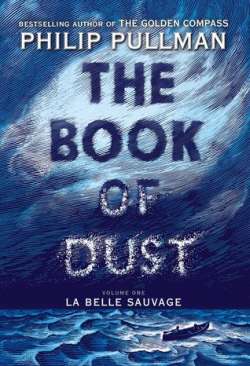
INSTANT NEW YORK TIMES BESTSELLER! "Too few things in our world are worth a seventeen year wait: The Book of Dust is one of them." —The Washington Post Philip Pullman returns to the parallel world of his groundbreaking novel The Golden Compass to expand on the story of Lyra, "one of fantasy's most indelible characters." (The New York Times Magazine) Malcolm Polstead is the kind of boy who notices everything but is not much noticed himself. And so perhaps it was inevitable that he would become a spy.... Malcolm's parents run an inn called the Trout, on the banks of the river Thames, and all of Oxford passes through its doors. Malcolm and his daemon, Asta, routinely overhear news and gossip, and the occasional scandal, but during a winter of unceasing rain, Malcolm catches wind of something new: intrigue. He finds a secret message inquiring about a dangerous substance called Dust—and the spy it was intended for finds him. When she asks Malcolm to keep his eyes open, he sees suspicious characters everywhere: the explorer Lord Asriel, clearly on the run; enforcement agents from the Magisterium; a gyptian named Coram with warnings just for Malcolm; and a beautiful woman with an evil monkey for a daemon. All are asking about the same thing: a girl—just a baby—named Lyra. Lyra is the kind of person who draws people in like magnets. And Malcolm will brave any danger, and make shocking sacrifices, to bring her safely through the storm. "The book is full of wonder. . . . Truly thrilling." —The New York Times "People will love the first volume of Philip Pullman's new trilogy with the same helpless vehemence that stole over them when The Golden Compass came out." —Slate
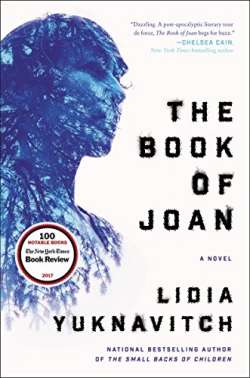
A New York Times Notable Book of 2017 The 25 Most Anticipated Books by Women for 2017, Elle Magazine The 32 Most Exciting Books Coming Out in 2017, BuzzFeed 50 Books We Can’t Wait to Read in 2017, Nylon Magazine 33 New Books to Read in 2017, The Huffington Post Most Anticipated, The Great 2017 Book Preview, The Millions New York Times Book Review Editor’s Choice National Bestseller “Brilliant and incendiary. . . . Radically new, full of maniacal invention and page-turning momentum. . . .Yuknavitch has exhibited a rare gift for writing that concedes little in its quest to be authentic, meaningful and relevant. By adding speculative elements to The Book of Joan, she reaches new heights with even higher stakes: the death or life of our planet.” — Jeff VanderMeer, New York Times Book Review (cover review) “Stunning. . . . Yuknavitch understands that our collective narrative can either destroy or redeem us, and the outcome depends not just on who’s telling it, but also on who’s listening.” — O, The Oprah Magazine “[A] searing fusion of literary fiction and reimagined history and science-fiction thriller and eco-fantasy. . . Yuknavitch is a bold and ecstatic writer.” — NPR Books “[The Book of Joan] offers a wealth of pathos, with plenty of resonant excruciations and some disturbing meditations on humanity’s place in creation . . . [It] concludes in a bold and satisfying apotheosis like some legend out of The Golden Bough and reaffirms that even amid utter devastation and ruin, hope can still blossom.” — Washington Post The bestselling author of The Small Backs of Children offers a vision of our near-extinction and a heroine—a reimagined Joan of Arc—poised to save a world ravaged by war, violence, and greed, and forever change history, in this provocative new novel. In the near future, world wars have transformed the earth into a battleground. Fleeing the unending violence and the planet’s now-radioactive surface, humans have regrouped to a mysterious platform known as CIEL, hovering over their erstwhile home. The changed world has turned evolution on its head: the surviving humans have become sexless, hairless, pale-white creatures floating in isolation, inscribing stories upon their skin. Out of the ranks of the endless wars rises Jean de Men, a charismatic and bloodthirsty cult leader who turns CIEL into a quasi-corporate police state. A group of rebels unite to dismantle his iron rule—galvanized by the heroic song of Joan, a child-warrior who possesses a mysterious force that lives within her and communes with the earth. When de Men and his armies turn Joan into a martyr, the consequences are astonishing. And no one—not the rebels, Jean de Men, or even Joan herself—can foresee the way her story and unique gift will forge the destiny of an entire world for generations. A riveting tale of destruction and love found in the direst of places—even at the extreme end of post-human experience—Lidia Yuknavitch’s The Book of Joan raises questions about what it means to be human, the fluidity of sex and gender, and the role of art as a means for survival.
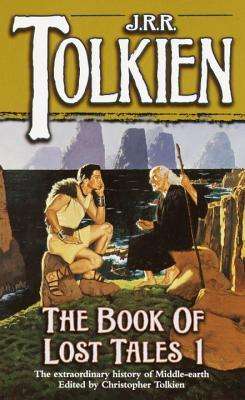
The Book of Lost Tales was the first major work of imagination by J.R.R. Tolkien, begun in 1916-17 when he was twenty-five years old and left incomplete several years later. It stands at the beginning of the entire conception of Middle-earth and Valinor, for these tales were the first form of the myths and legends that came to be called The Silmarillion. Embedded in English legend, they are set in the narrative frame of a great westward voyage over the Ocean by a mariner named Eriol (or AElfwine) to Tol Eressea, the Lonely Isle, where elves dwelt; from him they learned their true history, the Lost Tales of Elfinesse. In these Tales are found the earliest accounts and original ideas of Gods and Elves, Dwarves, Balrogs, and Orcs; of the Silmarils and the Two Trees of Valinor; of Nargothrond and Gondolin; of the geography and cosmology of Middle-earth. Volume One contains the tales of The Music of the Ainur, The Building of valinor, The Chaining of Melko, The coming of the Elves and The Flight of the Noldoli, among others. Each tale is followed by a short essay by Christopher Tolkien, the author's son and literary executor.
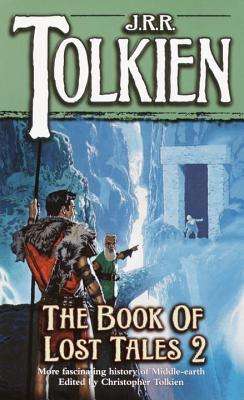
The Book of Lost Tales was the first major work of imagination by J.R.R. Tolkien, begun in 1916-17 when he was twenty-five years old and left incomplete several years later. It stands at the beginning of the entire conception of Middle-earth and Valinor, for these tales were the first form of the myths and legends that came to be called The Silmarillion. Embedded in English legend, they are set in the narrative frame of a great westward voyage over the Ocean by a mariner named Eriol (or AElfwine) to Tol Eressea, the Lonely Isle, where elves dwelt; from him they learned their true history, the Lost Tales of Elfinesse. In these Tales are found the earliest accounts and original ideas of Gods and Elves, Dwarves, Balrogs, and Orcs; of the Silmarils and the Two Trees of Valinor; of Nargothrond and Gondolin; of the geography and cosmology of Middle-earth. Volume One contains the tales of The Music of the Ainur, The Building of valinor, The Chaining of Melko, The coming of the Elves and The Flight of the Noldoli, among others. Each tale is followed by a short essay by Christopher Tolkien, the author's son and literary executor.
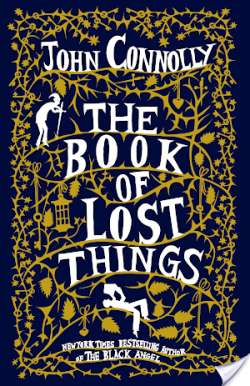
Taking refuge in fairy tales after the loss of his mother, twelve-year-old David finds himself violently propelled into an imaginary land in which the boundaries of fantasy and reality are disturbingly melded.
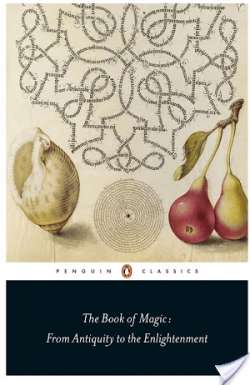
'. . . as when iron is drawn to a magnet, camphor is sucked into hot air, crystal lights up in the Sun, sulfur and a volatile liquid are kindled by flame, an empty eggshell filled with dew is raised towards the Sun . . .' An odd feature of the Bible is that it is full of stories featuring forms of magic and possession - from Joseph battling with Pharaoh's wizards to the supernatural actions of Jesus and his disciples. As, over the following centuries, the Christian church attempted to stamp out 'deviant' practices, there was a persistent interest in magic that drew strength from this Biblical validation. A strange blend of mumbo-jumbo, fraud and deeply serious study, magic was central to the European Renaissance, fascinating many of its greatest figures. Brian Copenhaver's wonderful anthology will be welcomed by everyone from those with the most casual interest in the magical tradition to anyone drawn to the Renaissance and the tangled, arcane roots of the scientific tradition.
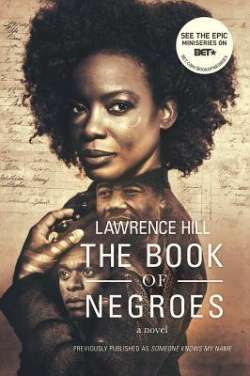
Lawrence Hill’s nationally bestselling novel has garnered praise and awards around the world. The Book of Negroes has won the Commonwealth Writers’ Prize, the Rogers Writers’ Trust Fiction Prize and CBC Canada Reads, among many others. Lawrence Hill—and his remarkable character Aminata Diallo—have become household names throughout Canada. Readers will follow the story of Aminata, an unforgettable heroine who cut a swath through an 18th-century world hostile to her colour and her sex. Abducted as an eleven-year-old child from her village in West Africa and put to work on an indigo plantation on the sea islands of South Carolina, Aminata survives by using midwifery skills learned at her mother’s side, and by drawing on a strength of character inherited from both parents. Eventually, she has the chance to register her name in the “Book of Negroes,” a historic British military ledger allowing 3,000 Black Loyalists passage on ships sailing from Manhattan to Nova Scotia. This remarkable novel transports the reader from an African village to a plantation in the southern United States, from a soured refuge in Nova Scotia to the coast of Sierra Leone, in a back-to-Africa odyssey of 1,200 former slaves. Bringing vividly to life one of the strongest female characters in recent fiction, Lawrence Hill’s remarkable novel has become a Canadian classic.
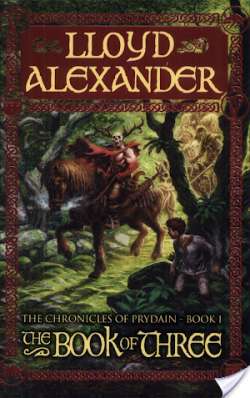
Taran, Assistant Pig-Keeper to a famous oracular sow, sets out on a hazardous mission to save Prydain from the forces of evil.
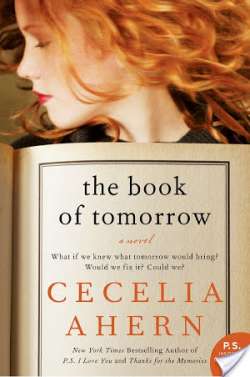
“A sweet, life-affirming tale . . . with a liberal sprinkling of magic.” —Marie Claire (UK) “Filled with family secrets, intrigue, and magic aplenty.” —Booklist Bestselling author Cecelia Ahern follows The Gift and P.S. I Love You with the mesmerizing story of a teenaged girl coming face-to-face with grief, growth, and magic in the Irish countryside, after a mysterious book begins to reveal her own memories from one day in the future. Perfect for long-time fans of Ahern, as well as for younger readers coming to her for the first time, The Book of Tomorrow’s strong voice and sophisticated storytelling mark an instant new classic from this already beloved author.
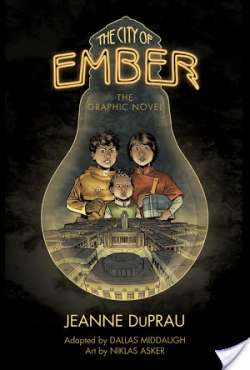
In the year 241, twelve-year-old Lina trades jobs on Assignment Day to be a Messenger to run to new places in her decaying but beloved city, perhaps even to glimpse Unknown Regions.
